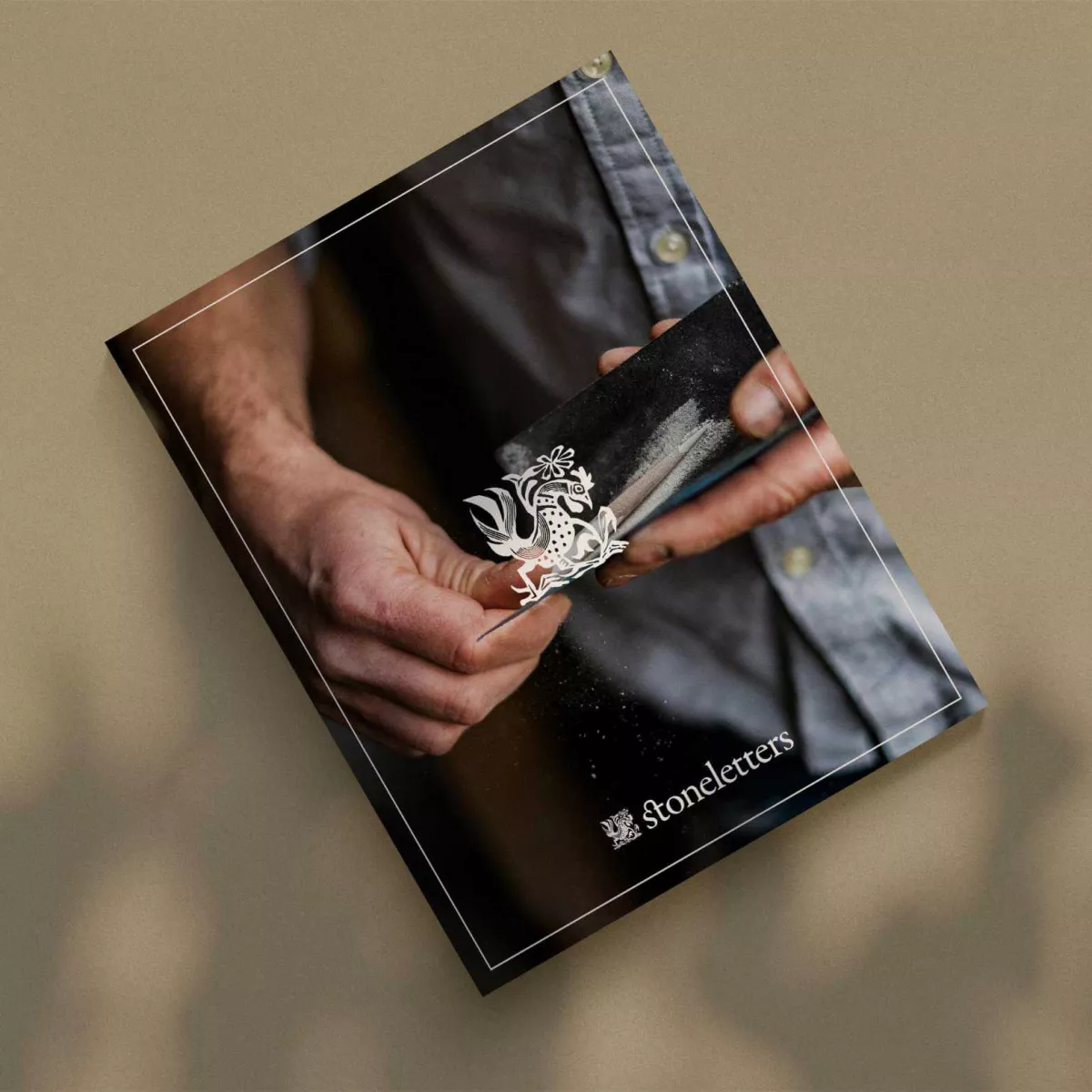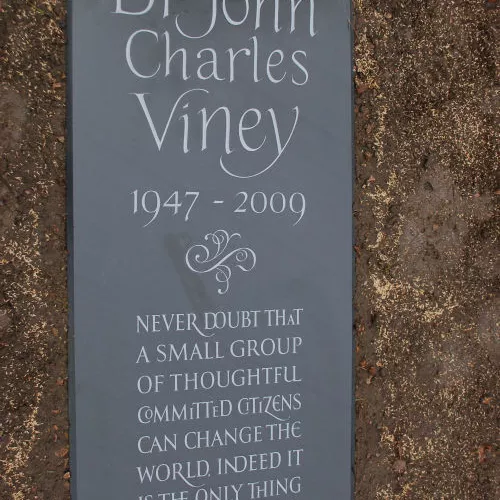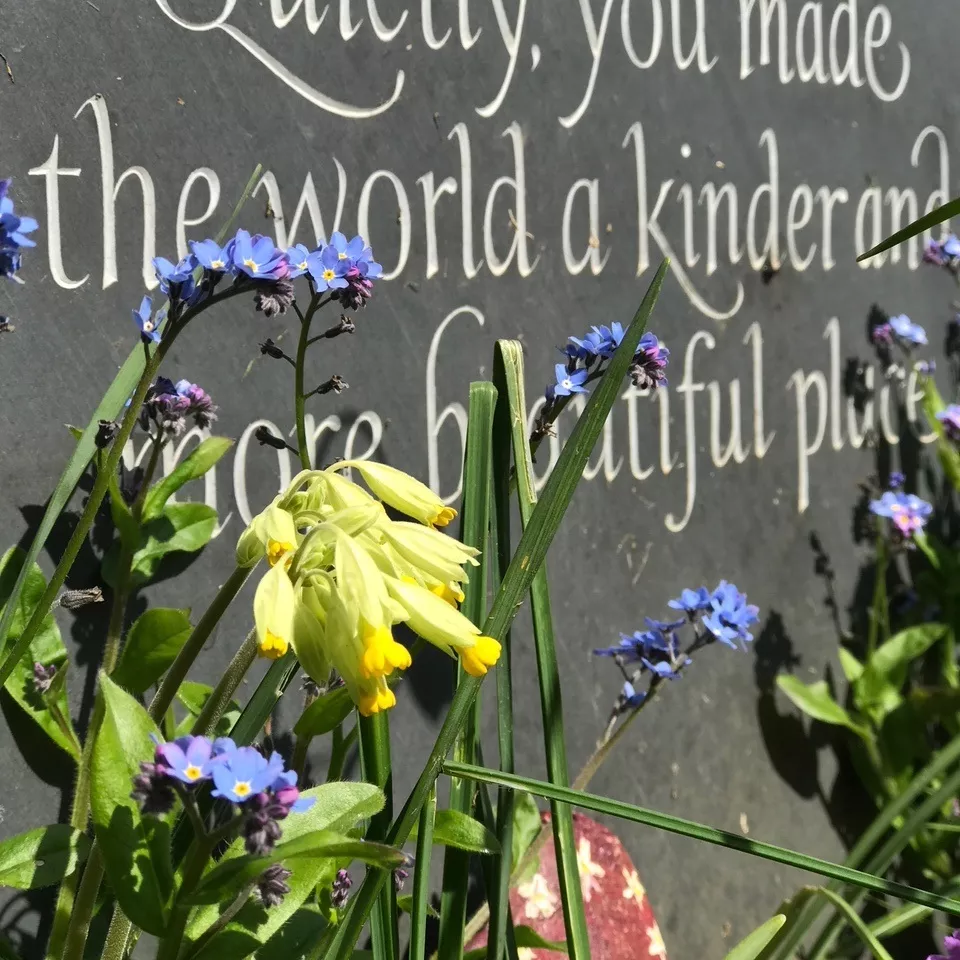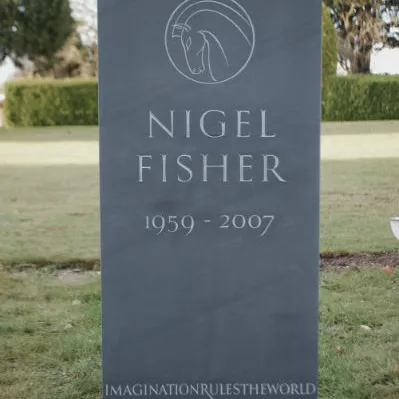By using this website, you agree to our privacy policy
×Contents
Husband and Wife headstones - an expert guide
Having made joint or double headstones for couples for over twenty years, here I share my experience, offering expert advice and inspiration, and answering many common questions.
Below are some inspiring ideas for husband and wife headstone designs, as well as advice about choosing the wording for a husband and wife or parents’ headstone. The beauty of a joint headstone for a husband and wife lies in the careful thought and consideration given to the design which incorporates both names into the final headstone. This is something that the person commissioning the headstone might not always consider at the time as they tend to be more concerned with their loved one’s name and epitaph that that of their own or choosing a joint epitaph.
Introduction- the challenge of designing a double headstone
Designing a headstone for a husband and wife is often a challenge, because the headstone is often designed while one spouse is still alive. The challenge lies in creating a headstone which is fitting and looks complete for the deceased while allowing space for the surviving spouse, with a design which will later incorporate the surviving spouse’s name without it looking like an afterthought.
When children commission a headstone for their parents, both husband and wife tend to be already deceased, and in this situation it is much easier to create a design which incorporates both mother and father, wife and husband in a unified way.
My experience in designing headstones in collaboration with the surviving spouse or with the children of the husband and wife means that we can create something special and unique which honours both husband and wife as a couple, but also as individuals in their own right.
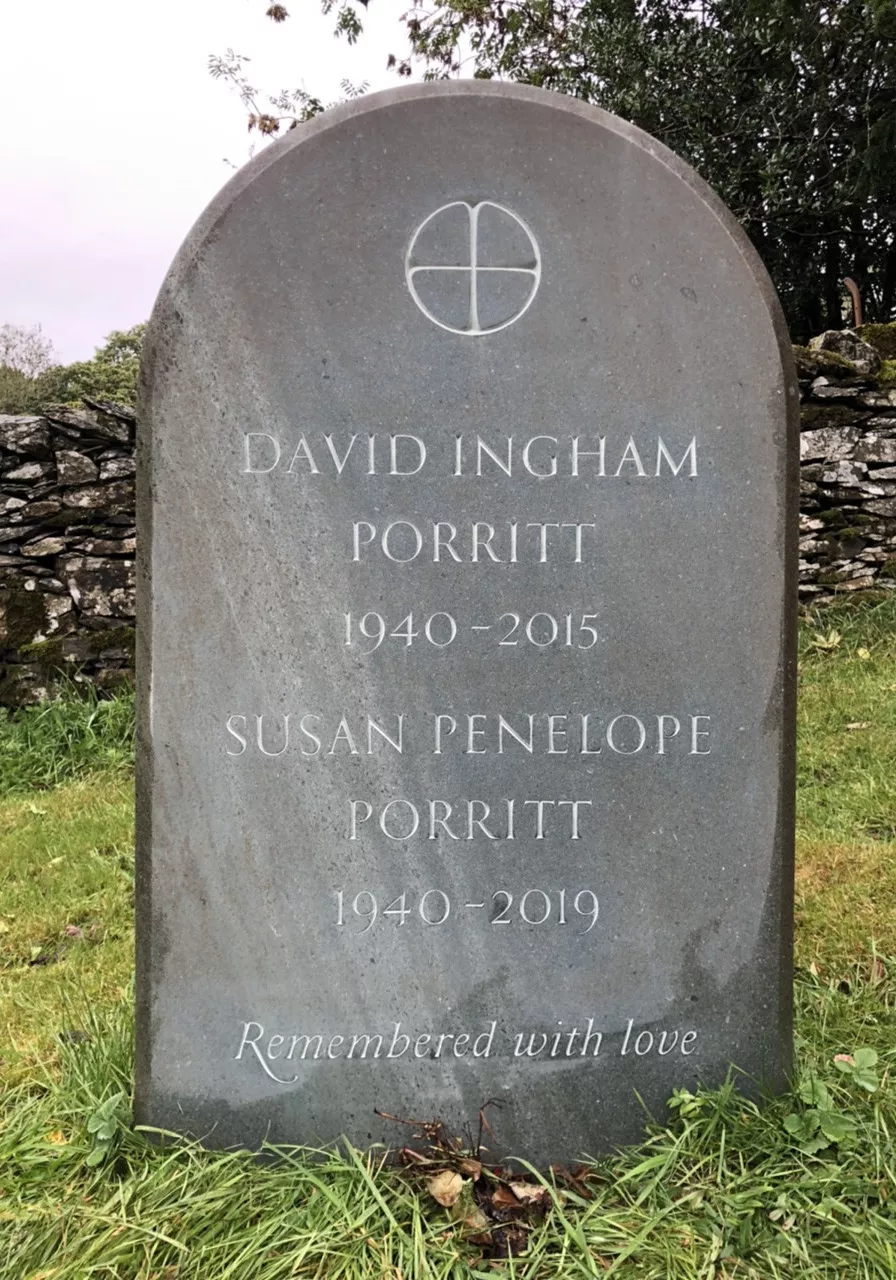
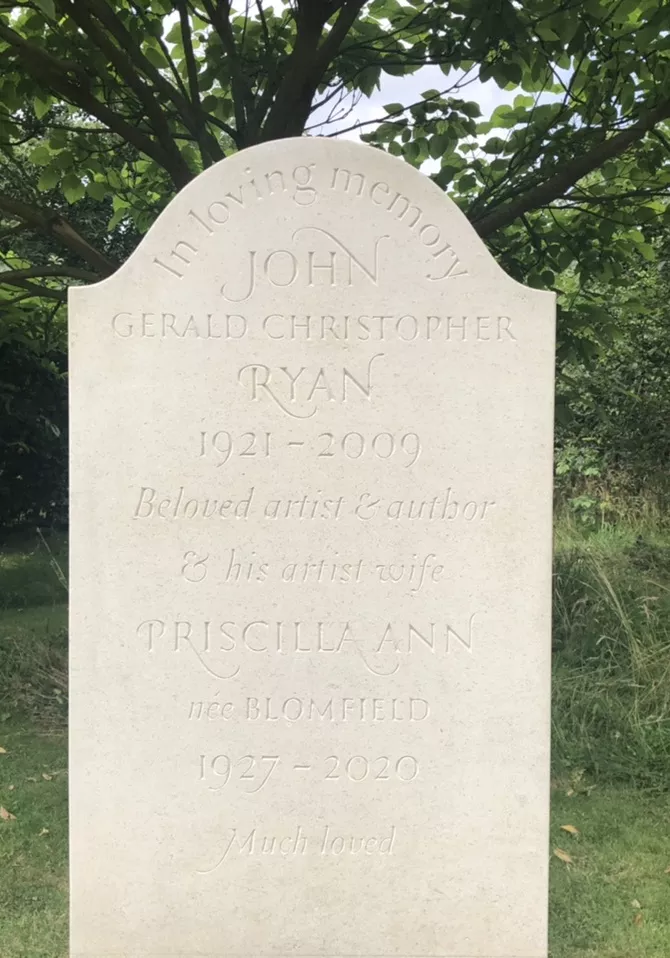
Honouring both husband and wife equally
A joint headstone for a husband and wife needs to honour both people equally, and might celebrate or declare their love for each other, and their unity and friendship both in life and death, whilst at the same time honouring each person in their own right, as an individual. This presents many design challenges, and we need to work within the regulations of the churchyard or cemetery, which might stipulate that a headstone needs to be quite small, so we may not have very much space to work within.
Allowing enough space
It is crucial to allow enough space for the name and dates of the living husband or wife to be added, whilst at the same time not allowing so much space that the deceased’s headstone looks as if it is waiting for something, and is unfinished.
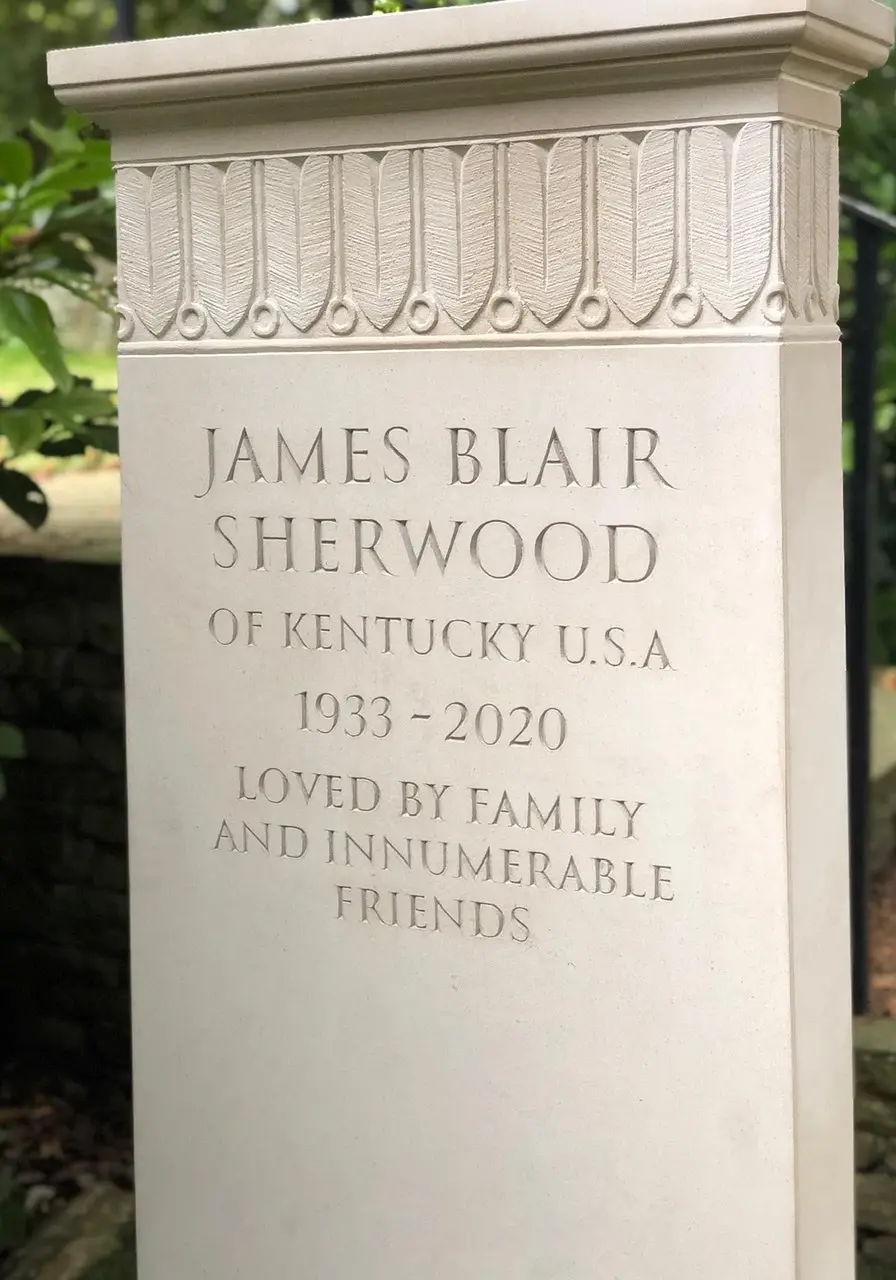
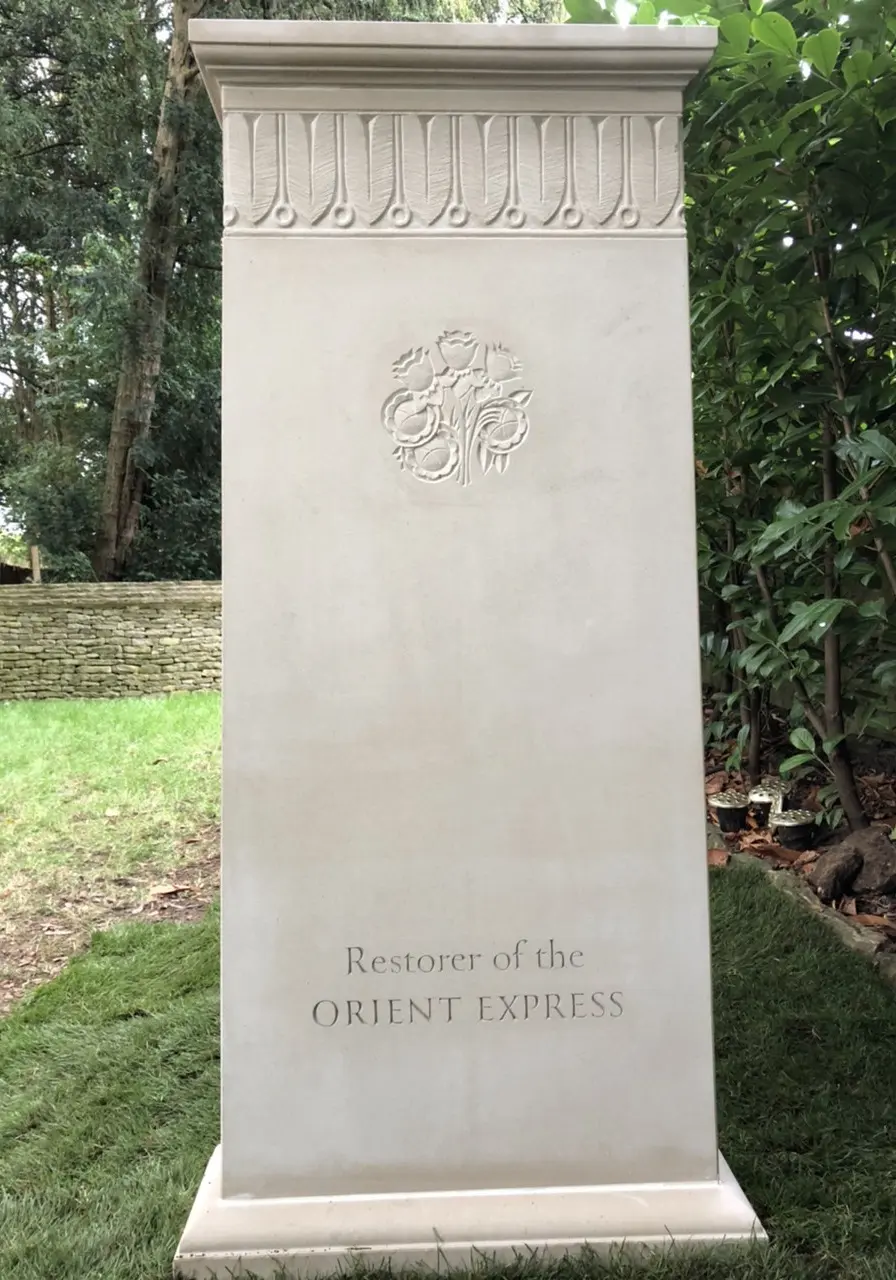
On this traditional double headstone space has been left for the wife. The back has also been used to add details about the husband without overcrowding the front.
Start with the inscription
The beauty of commissioning a bespoke hand carved headstone for a husband and wife, is that we can start with the inscription and then work backwards, choosing the right stone to fit the inscription rather than trying to fit an inscription to a specific stone.
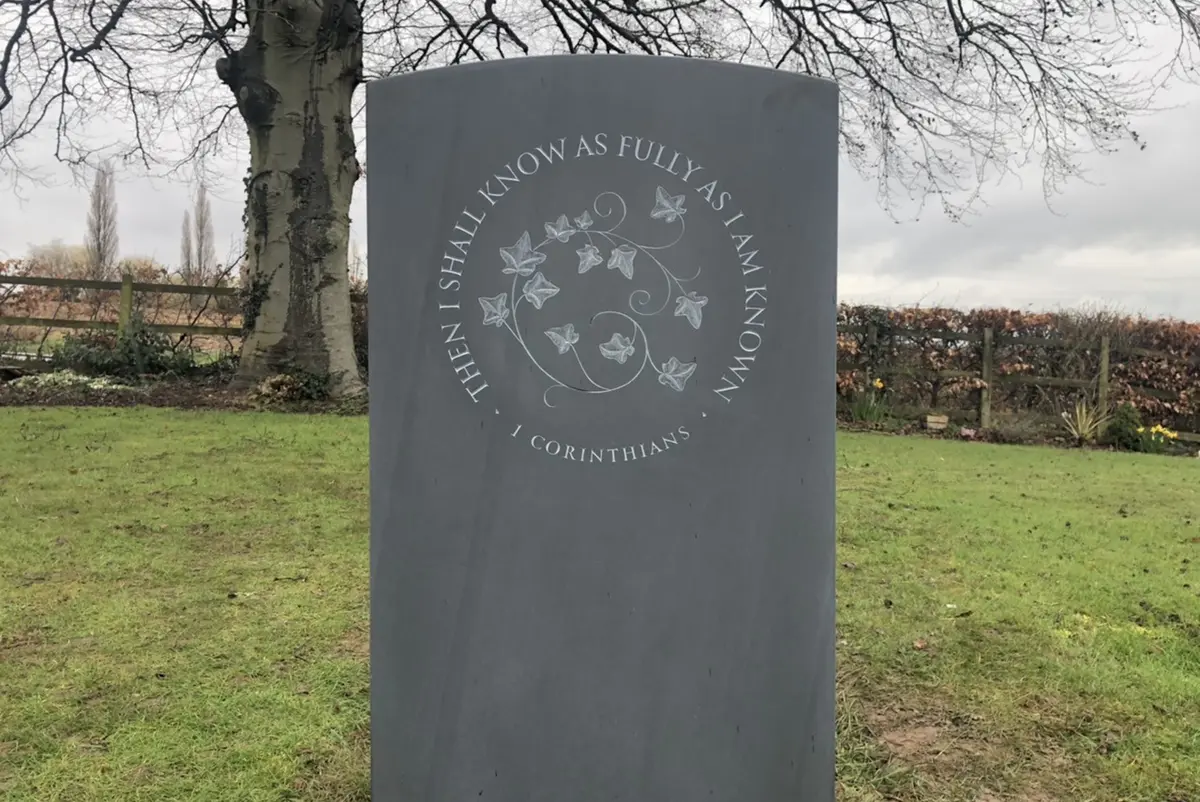
The back of a double headstone can be a good place for a decorative carving or circle of lettering.
In deciding on the design of a double headstone for a husband and wife, questions that need to be considered include:
Is it a double or triple grave?
Sometimes a headstone might be for an individual and two other members of the family, such as a son or daughter and both of their parents.
Are you commissioning a headstone for both parents or is one still alive?
If both parents are already dead it is quite nice to place both first names together on one line, with the surname below these names, followed by two sets of dates, rather than repeating the surname twice.
Edward and Mary
Smith
or
Edward & Mary
Smith
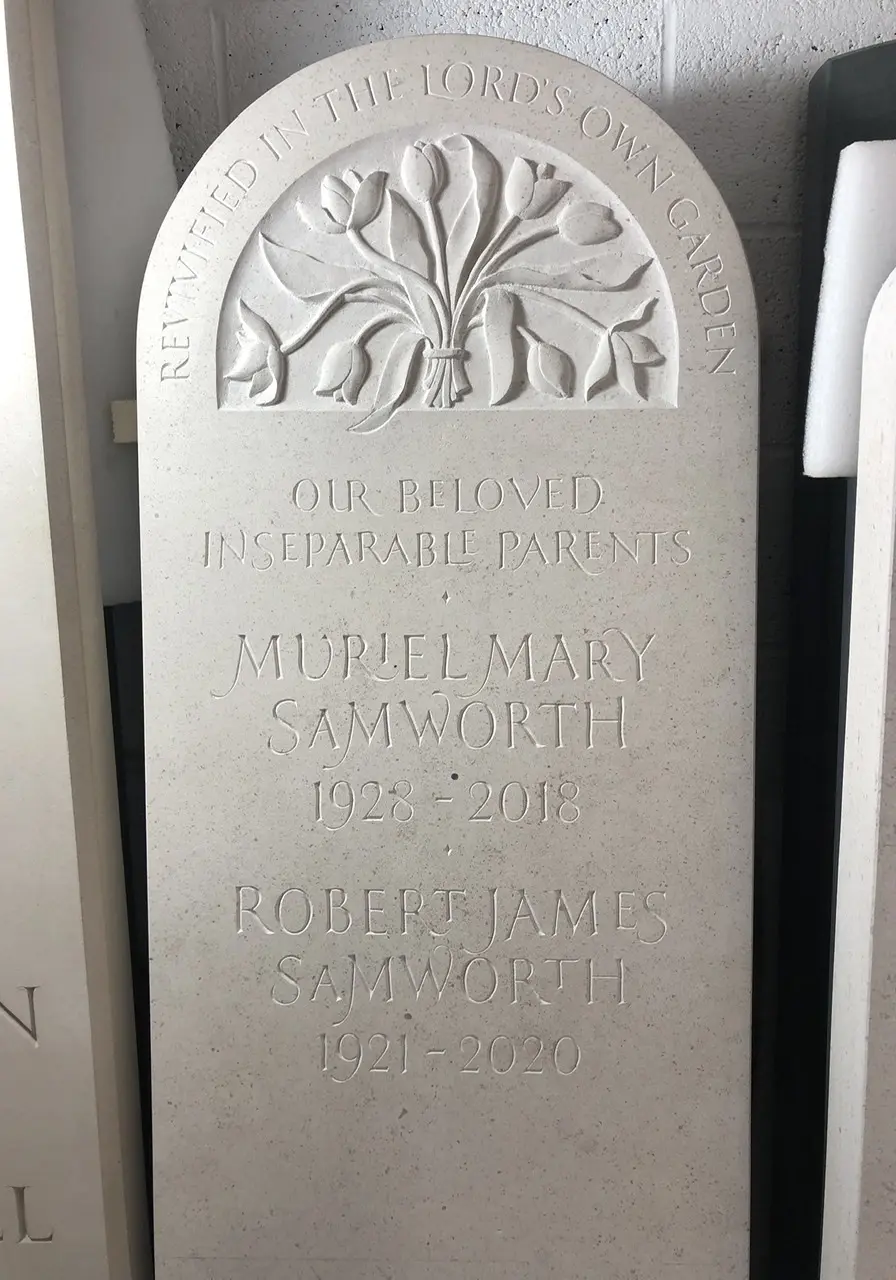
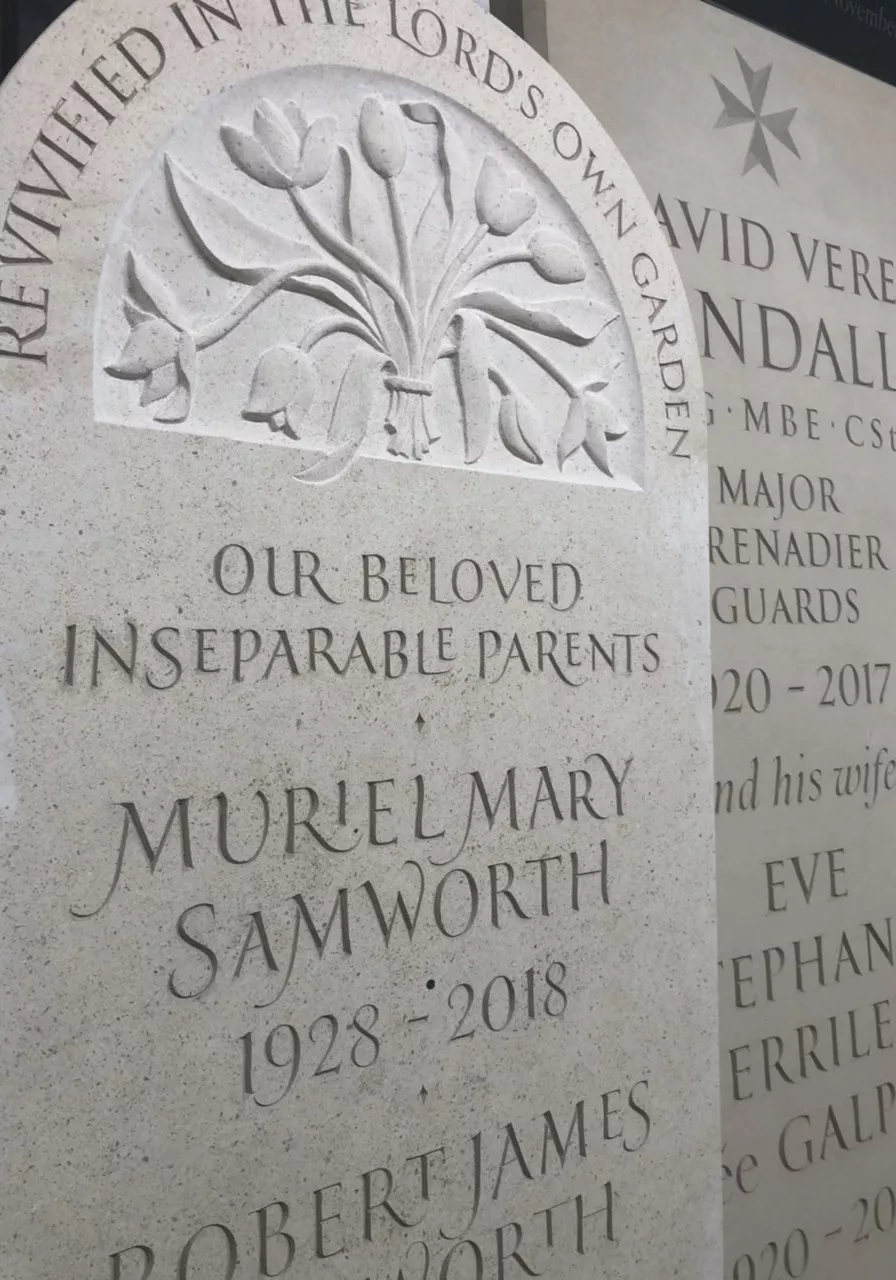
Here as the double headstone was commissioned by the children once both parents were deceased, their first names are used together
Do I include the full dates?
If it is a double grave, full dates are best avoided, as otherwise you would need four lines of dates which can seem a bit date heavy and boring.
Will both parents need to be on the same headstone or do you want a replacement one in future?
If one person is still alive and will be added in future, it is important to design the headstone to allow room for the husband or wife to be added to the headstone, without being cramped or to look like an afterthought, but at the same time it is important to design the headstone so that it does not look as if it is unfinished. The first design needs to look complete in itself, while still allowing space for the remaining spouse’s name to be added.
Should I leave a space for the second spouse followed by an epitaph at the bottom?
We tend to avoid leaving a space for a name and dates, followed by an epitaph at the bottom as the headstone will look as if it is waiting for a name to be added. If a wife or husband wants an epitaph, we might add it after they die, or we could add an inscription around the top of the headstone or on the back rather than at the very bottom. So sometimes I encourage the person commissioning the headstone to let me add the epitaph later once they have died, although we can always design the final headstone with the epitaphs and both names at the time and put the design on file to be used once they die.
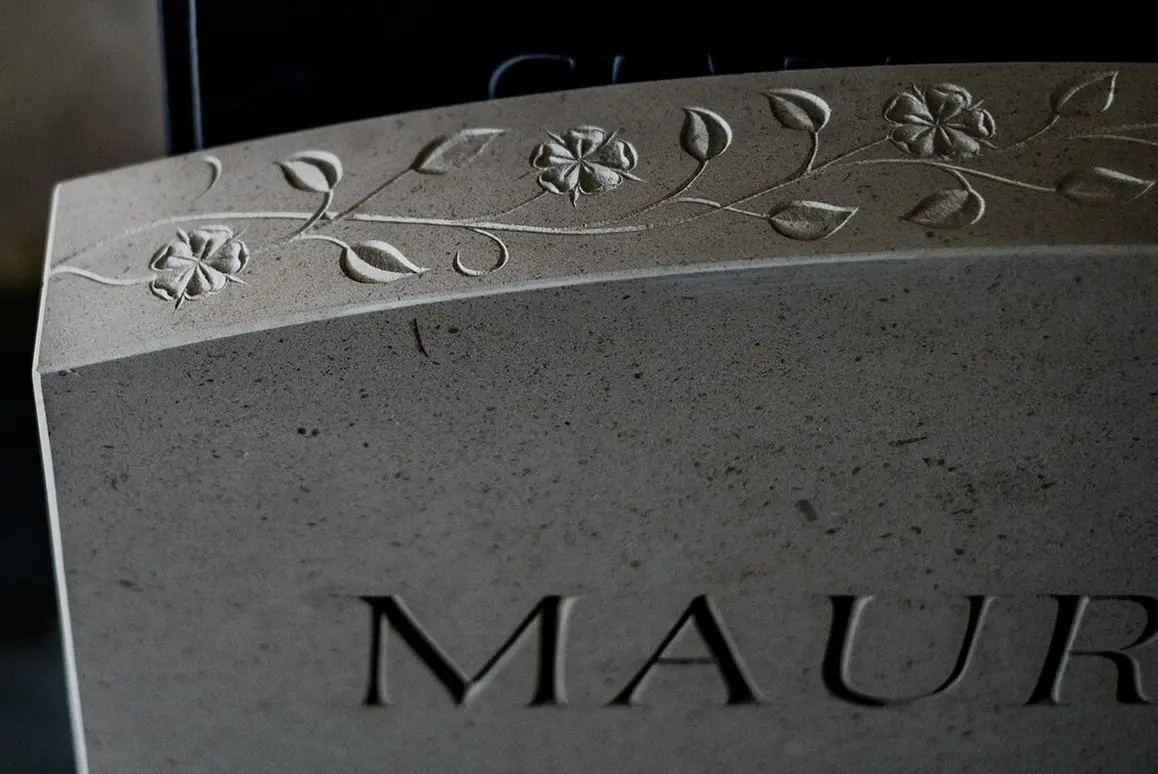
Carvings can be added to the top of a headstone to free up space for the names on the face
What space will you need and what will the future inscription look like?
Quite often the surviving spouse wants me to add the epitaph for both of them at the bottom, at the time they design the headstone, and this is also ok; there are no hard and fast rules. The important thing is to make sure we leave enough space for the final name.
What are the options for adding the second name?
Occasionally people add the second name without the dates even though they are still alive, sometimes adding the date of birth and leaving the date of death to be added later.
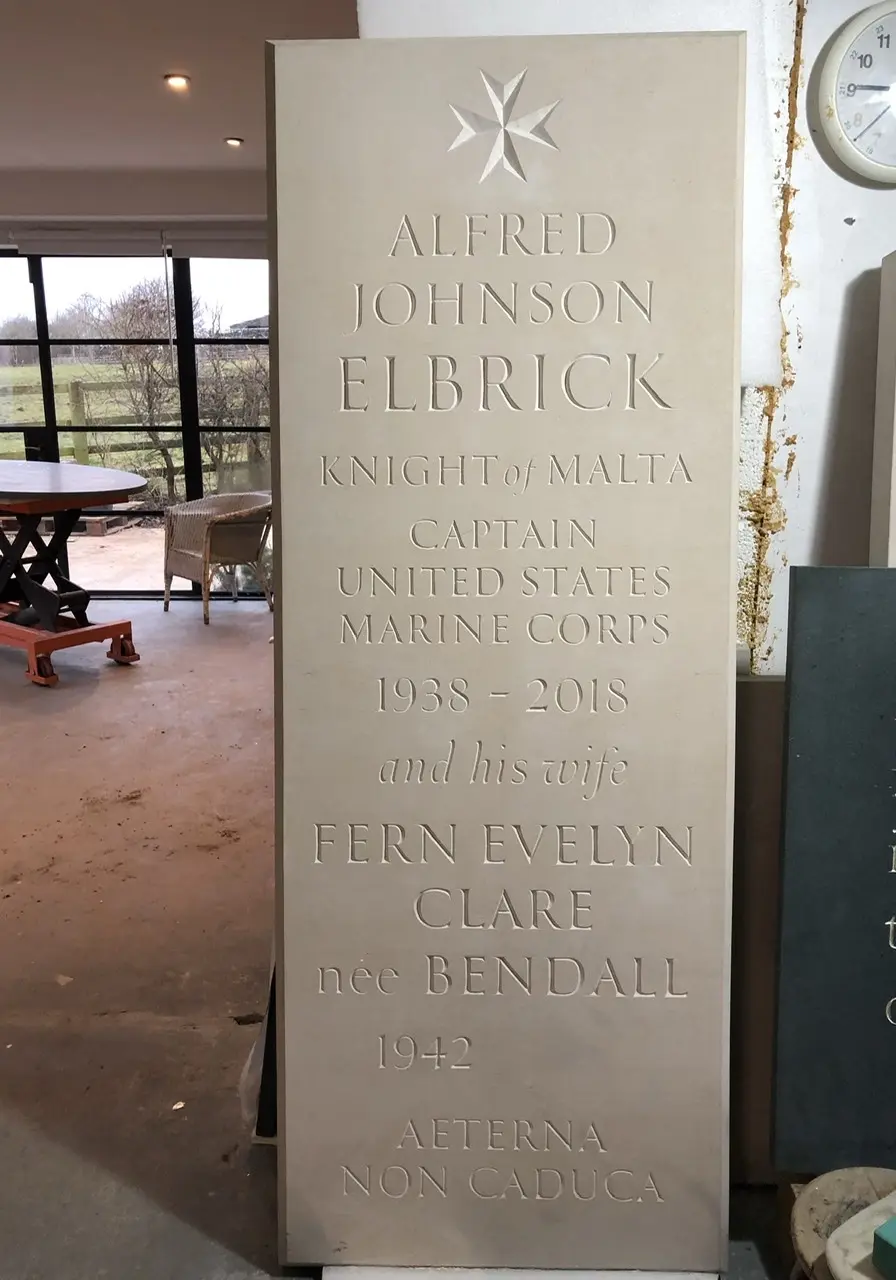
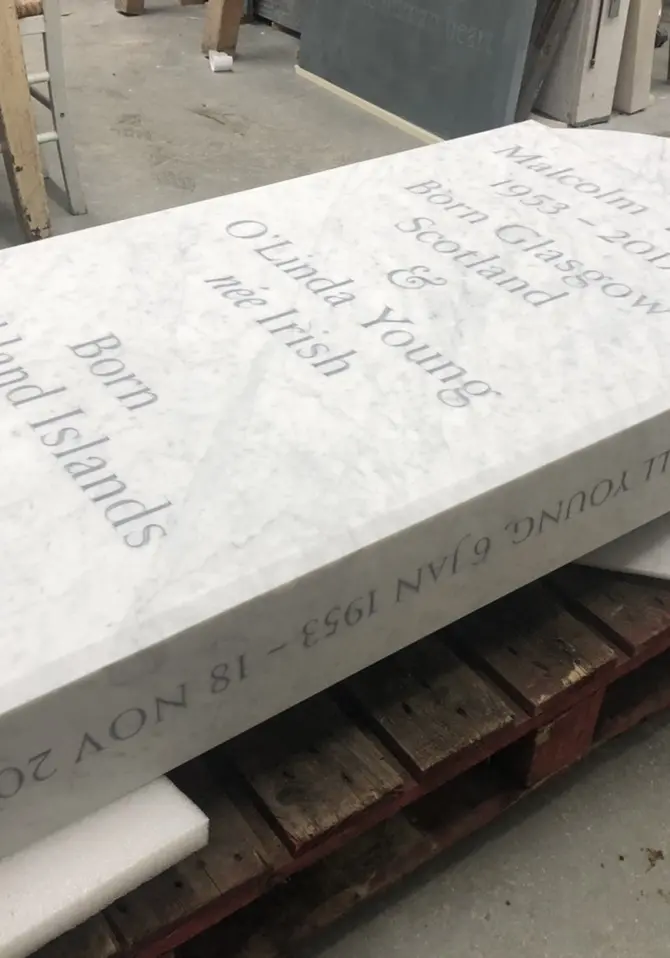
Both these beautiful double headstones have included the surviving spouse, leaving space for the dates to be added in future.
Choosing your own epitaph
Most people who leave space tend to commission the headstone with their own name in mind in future, and they don’t tend to want to add a long inscription beneath their own name. People tend to be quite modest when it comes to their own epitaphs, so they often only want enough space for their name and dates alone to be added, having already included an inscription or epitaph for their husband or wife at the top of the headstone. I always encourage them to consider adding something that relates to them, so that they are also honoured on the final headstone.
When a daughter or son is choosing the double headstone, both parents will tend to be deceased, in which case they tend to choose epitaphs which might mean something to both parents, such as “United at last” or “Forever loved” rather than an individual epitaph for each parent, though there are no hard and fast rules.
Do you repeat the surname or not on a husband and wife headstone?
The choice of whether to repeat the surname or not is a personal choice and can lead to a quite different feel to the headstone inscription.
For example:
Sometimes we use the full name of the first person who died, followed by just the first name of the spouse.
Edward Smith
xxxx-xxxx
and his wife
Anne
The above is quite soft and less formal than the other option which is to repeat the surname:
Edward Smith
xxxx-xxxx
Anne Smith
xxxx-xxxx
Sometimes people might want to add the maiden name so it would read:
Edward Smith
xxxx-xxxx
and his wife Anne
nee Jones
xxxx-xxxx
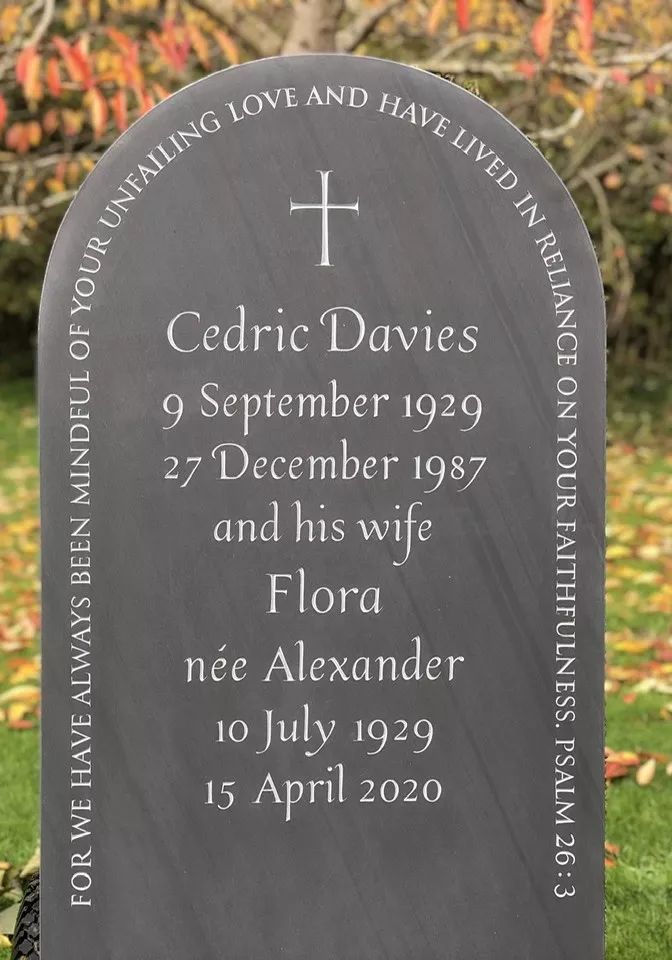
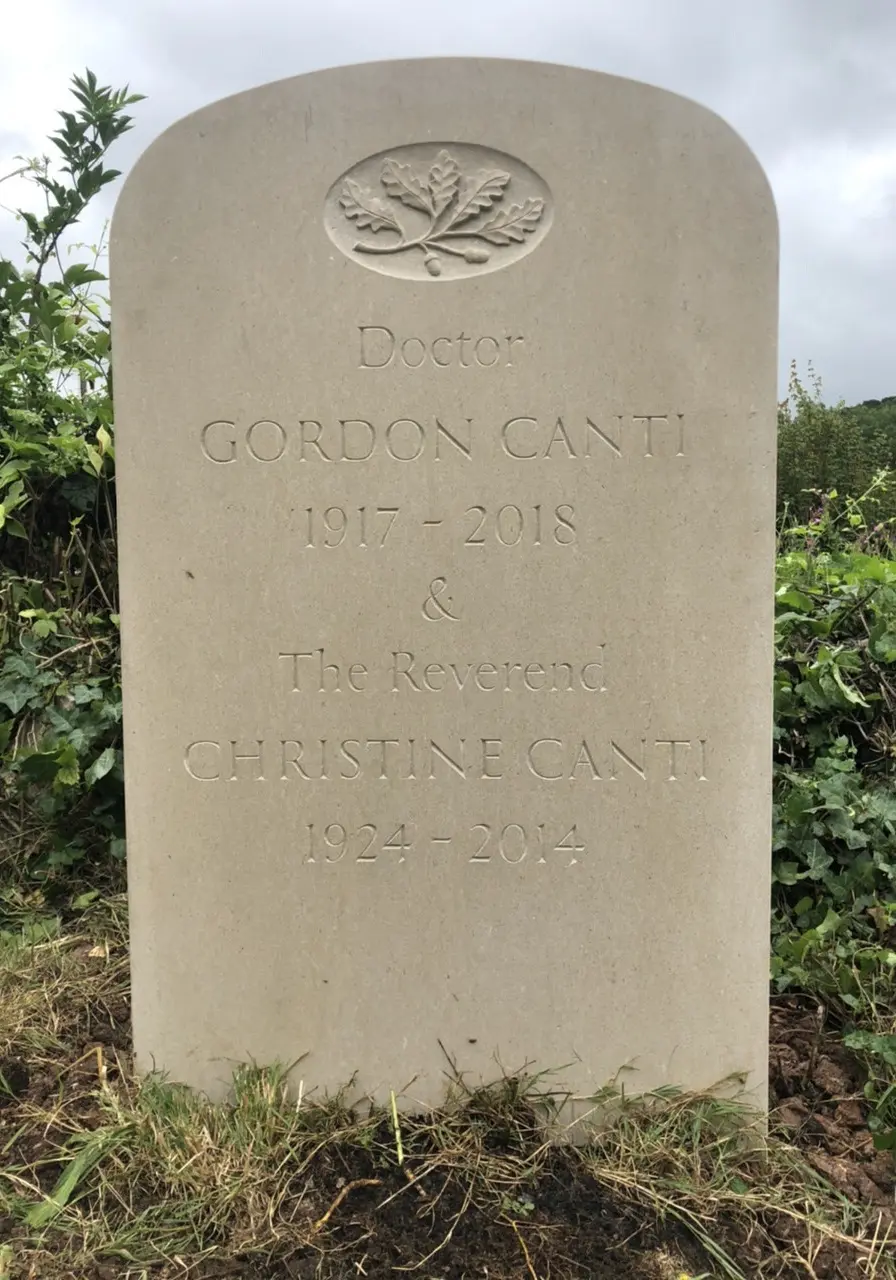
Alternative ways to list the husband and wife
An alternative and more affectionate description I believe, is to use the word “with his wife” rather than “and his wife”
Edward Smith
xxxx-xxxx
with his wife
Mary
xxxx-xxxx
or
Edward Smith
xxxx-xxxx
and his beloved wife
Mary
xxxx-xxxx
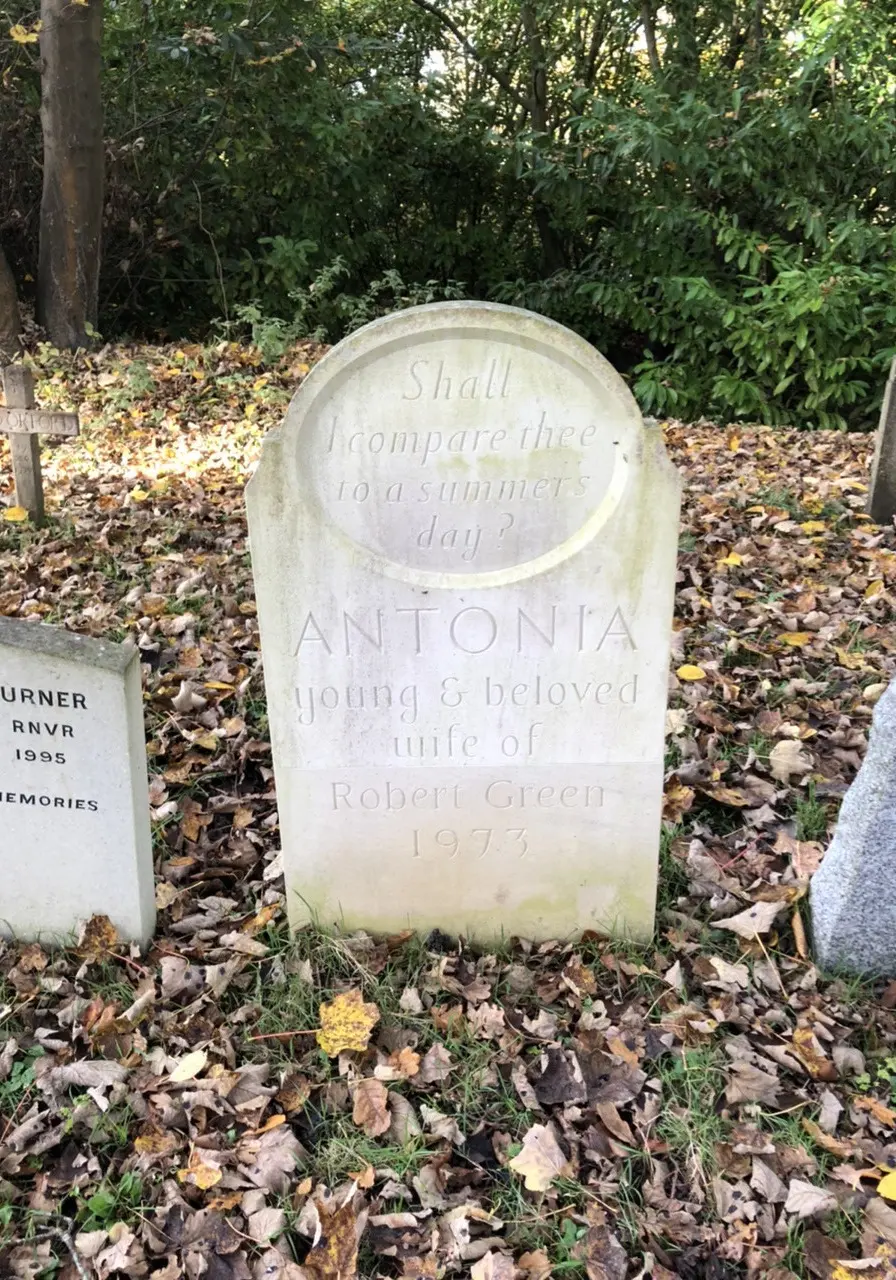
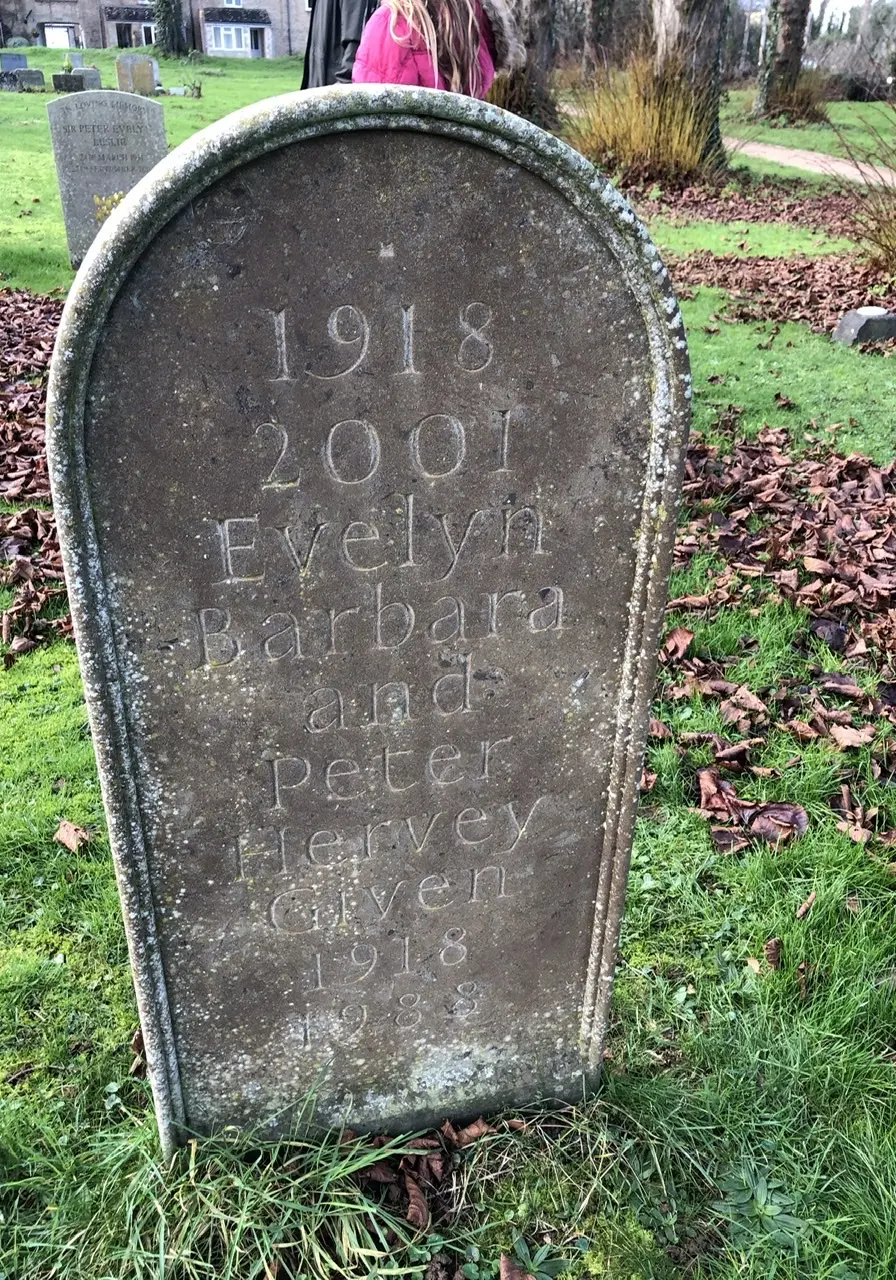
These old double headstone each have charm and do not adhere to conventions
An intimate option
An option which I really like is to omit the word wife or husband altogether. This lends a very intimate feel to the inscription:
Edward Smith
xxxx-xxxx
and his beloved Mary
The most challenging part of a headstone design for a husband or wife, is to make sure that the name is not added as an afterthought.
Mary Smith
wife of Edward
Together at last
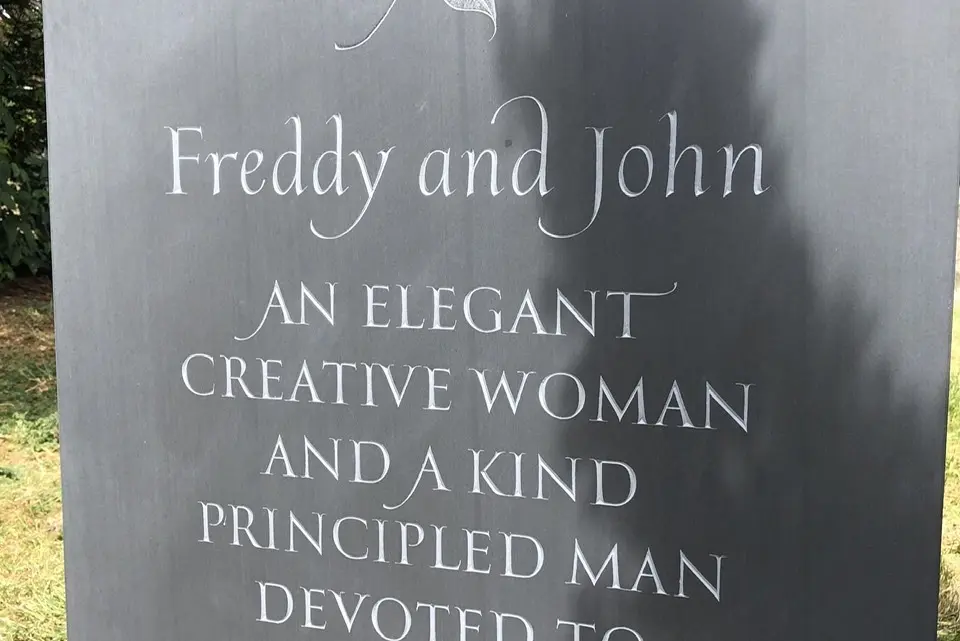
This intimate headstone uses the first names only
What about carvings on joint husband and wife headstones?
When including a carving I encourage choosing a carving which has equal relevance to both husband and wife. This might for example be a flower or bird if they both loved nature or a boat if they enjoyed the sea. Sometimes however, two separate carvings might be chosen, each to echo an interested or love for the husband and wife respectively. I don't tend to encourage this so much as it can lead to a headstone looking cluttered.
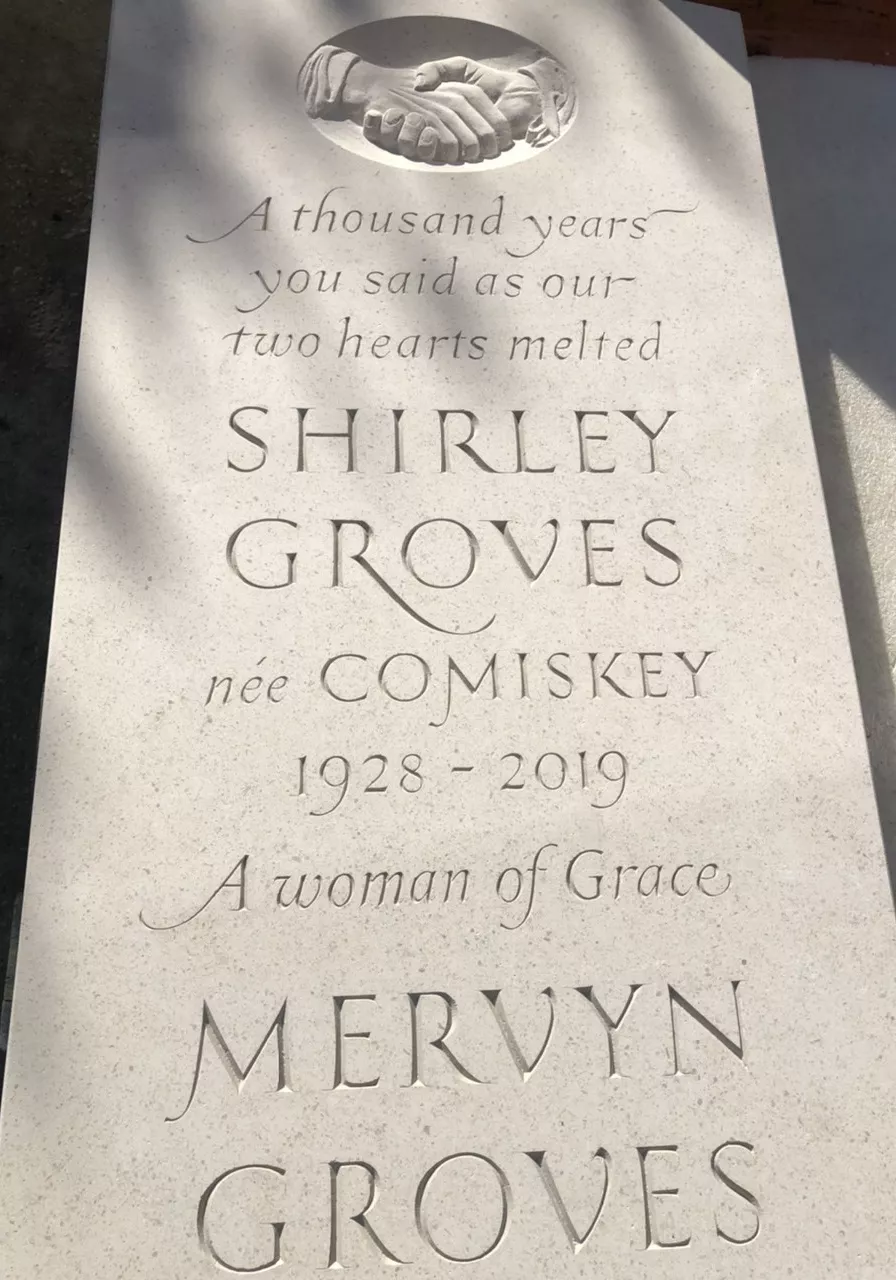
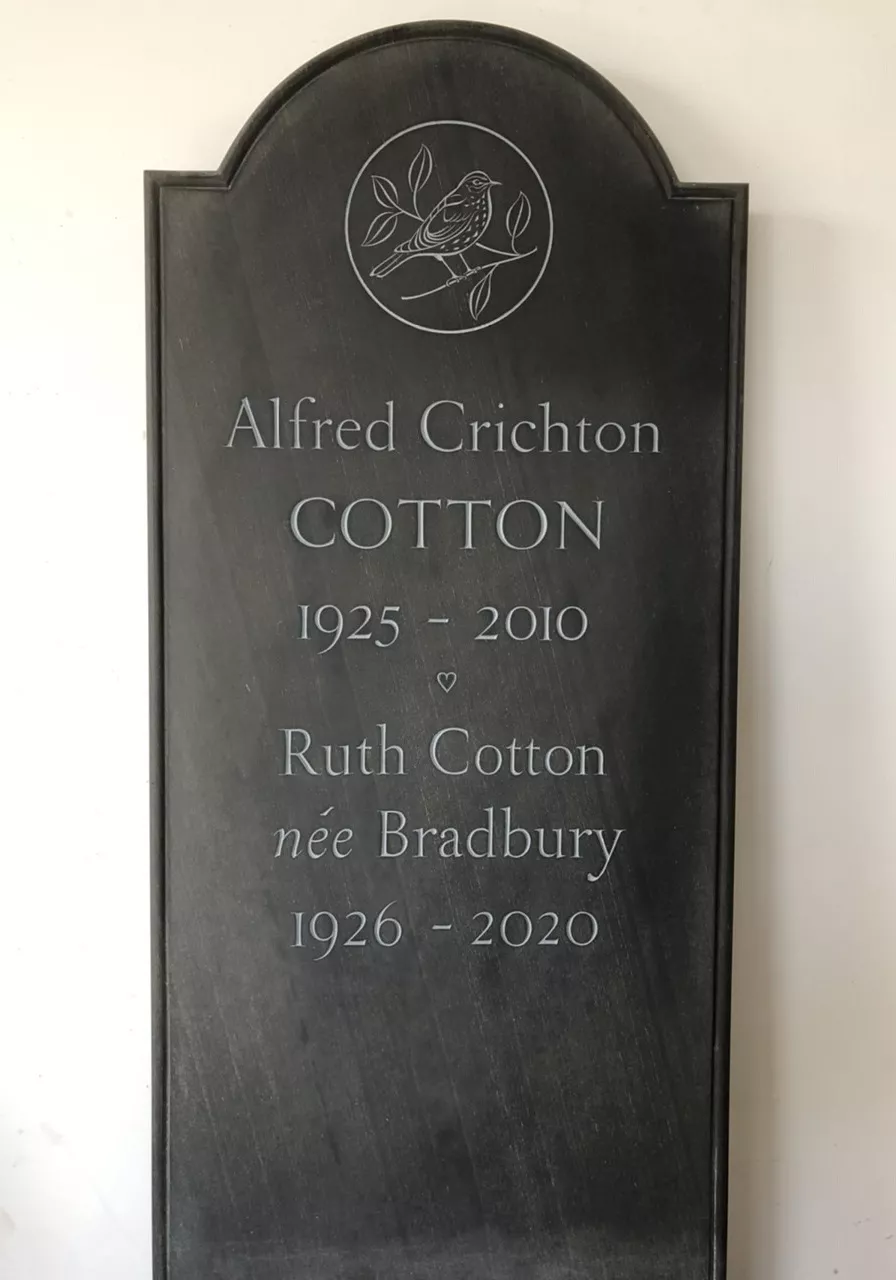
What can I do if I haven’t allowed enough space?
This is quite common, where not enough space has been allowed for the surviving spouse. Sometimes a husband or wife might choose a headstone for their beloved without thinking about their own inclusion. People sometimes forget that an inscription cannot be too close to the ground as not only would it be illegible due to long grass but also it might be damaged by mowing and scratched. I tend to suggest we leave at least 12 inches below the last line and the ground level.
Using two headstones on a double grave
One option where there is a double grave, when quite a wide headstone is allowed, would be to make two headstones, each very narrow, where the top continues as if one headstone, leaving a very small gap in between the two headstones.
Each headstone would need to be designed so that they looked complete in themselves, whilst at the same time looking part of a pair once the second headstone is in place.
This design would depend on the cemetery or churchyard allowing such headstones, as sometimes there is a minimum width, so that this would not be possible.
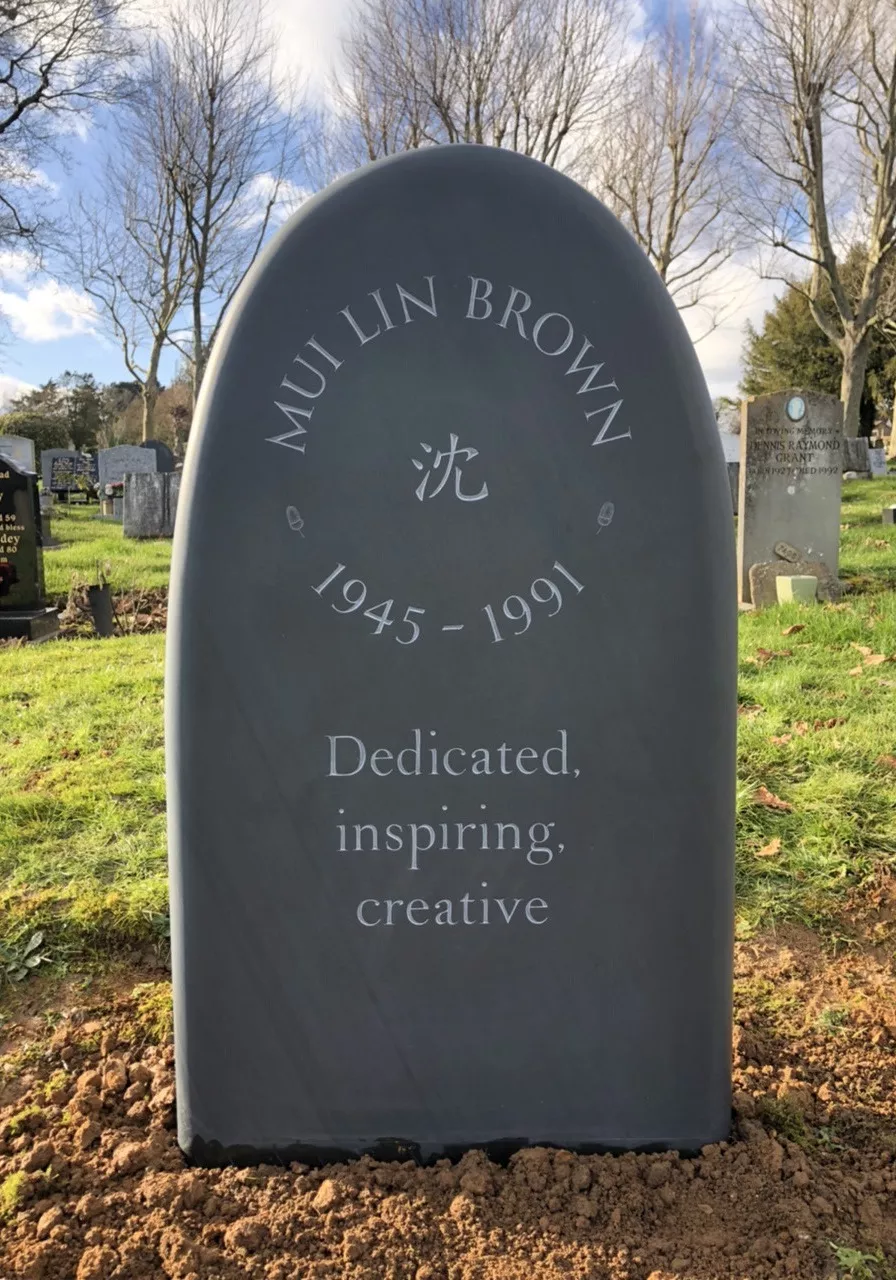
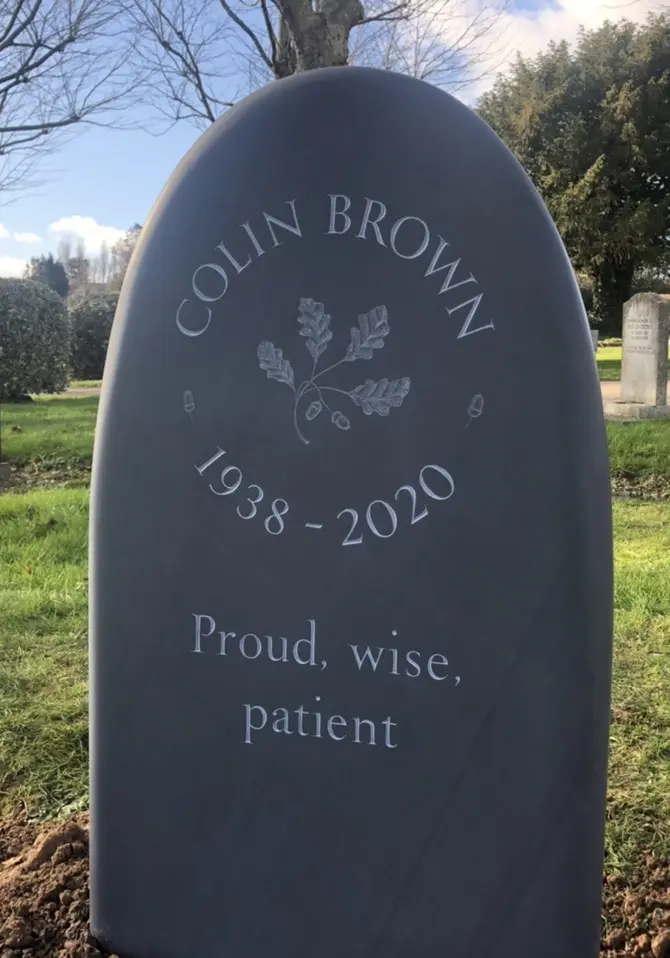
These two headstones were designed as a pair from the same beautiful slate with rounded tops
Using each half of a headstone for each person
This is in my opinion quite old fashioned and I tend to avoid this sort of design. It also means that one half of the headstone might remain empty if it is only for one person at first, and will look as if it is waiting for the second name. I also prefer tall and narrow headstones to short and wide ones.
Husband and wife headstones which are separate but linked in content and design
Sometimes I create a headstone for a husband or wife, which contains a verse such as an inscription from a poem or a passage from the Bible, which looks complete in itself, but that can later be continued or echoed in the second headstone. This can be really nice especially if the two headstones are nearby but not next to each other. You can tell that the headstones are part of a pair in the way the two headstone designs echo each other, and having read both inscriptions, you can see how they link together.
In some cases, I might purchase both headstones at the same time from the quarry and keep one in storage to ensure that the headstones match in material, as you can never be sure that the stone you order will look the same if ordered many years later, as quarries reach new seams and stones can change in colour with slight variations.
What happens when the husband or wife dies and their name needs to be added?
The spouse usually tends to die within ten or so years of the first. During this time the original headstone lettering may have faded or weathered.
If the husband or wife whose name is to be added to the joint headstone has instructed in their will for us to complete the headstone, the funeral director will ring us and we will remove the headstone, clean it up, box it and store it for at least a year before reinstalling it with the new inscription. We always allow at least a year before reinstalling the headstone. Ideally the headstone will have already been designed with both names in mind, and the original design will be on file. Because we design our letterforms and draw them out freehand, we will be able to perfectly match the original inscription.
Painting the husband and wife’s headstone
If the inscription is painted we tend to repaint the entire headstone to ensure that the new inscription will look like it belongs to the original. We do this even if the original name was only cut a short time ago, because we mix up the paint ourselves each time, and thus it would be impossible to match the original paint colour exactly.
Removing the headstone to add a name in future
We specifically use monolith fixings as this will allow the headstone to be safely lifted from the ground without damage. This is much harder to do with headstones which have been installed using pin fixings and a base. The monolith headstone installation method does not use any fixer or cement so that removing the headstone is easy and safe.
We always need to remove the headstone anyway when the burial takes place, so that we do not add the names in situ, preferring to add the name in the workshop.
We never allow the funeral directors to remove the headstone as we like to make sure they are not damaged as we remove them.
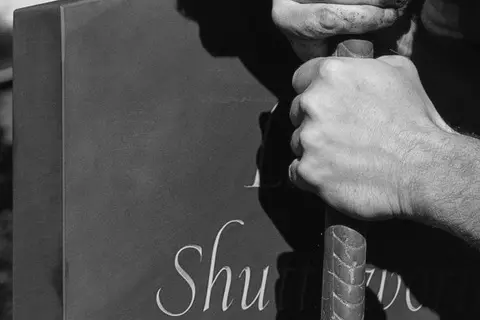
Our fixing methods allow easy lifting of a headstone when a new name needs to be added
What happens if there is a second spouse?
If the surviving spouse remarries there may then be a second spouse in which case there may be three names to be added to the headstone. This is unlikely to be decided at the time of placement of the original headstone, so there probably not be enough space on the headstone for an additional third name. This is something that the husband and wife should perhaps discuss before the first person dies, as it might be a sensitive issue.
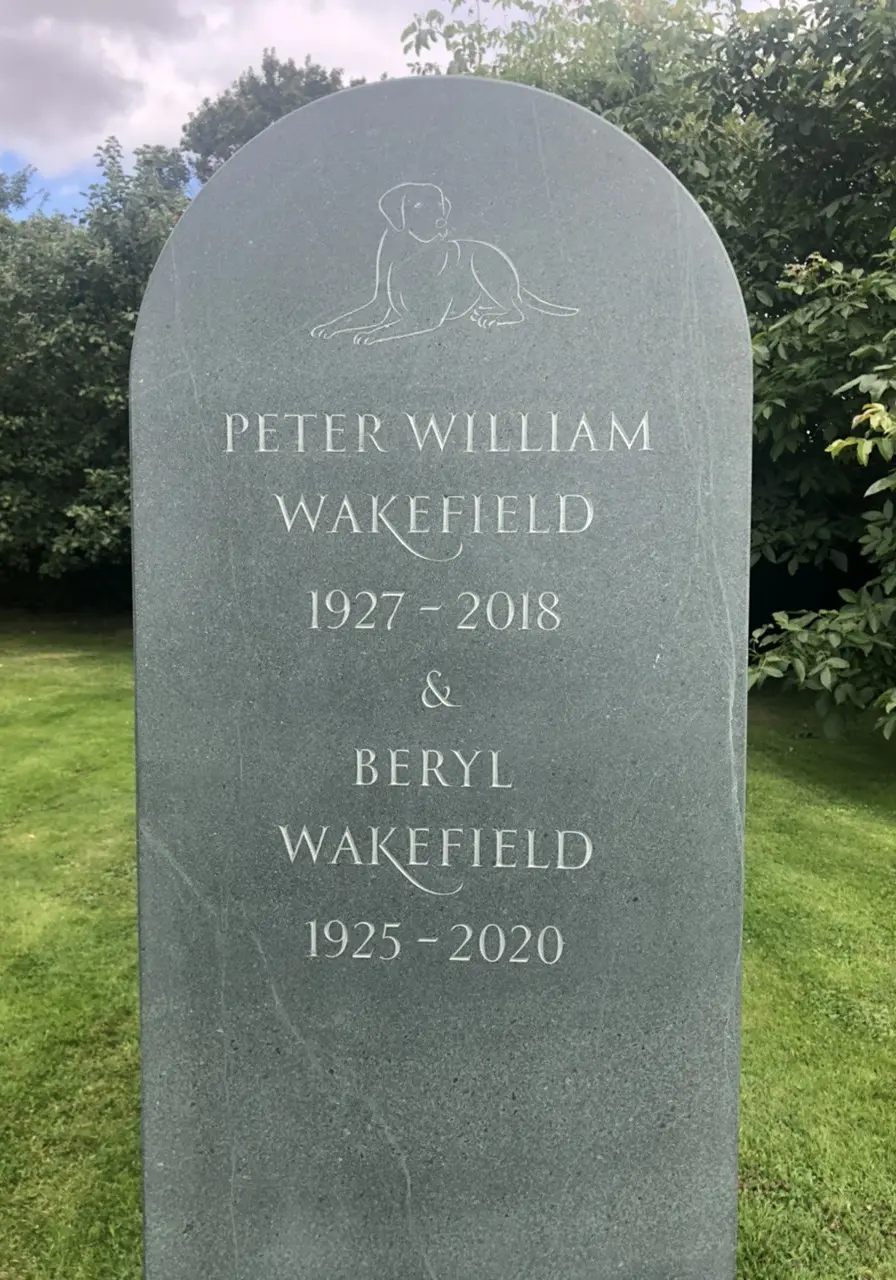
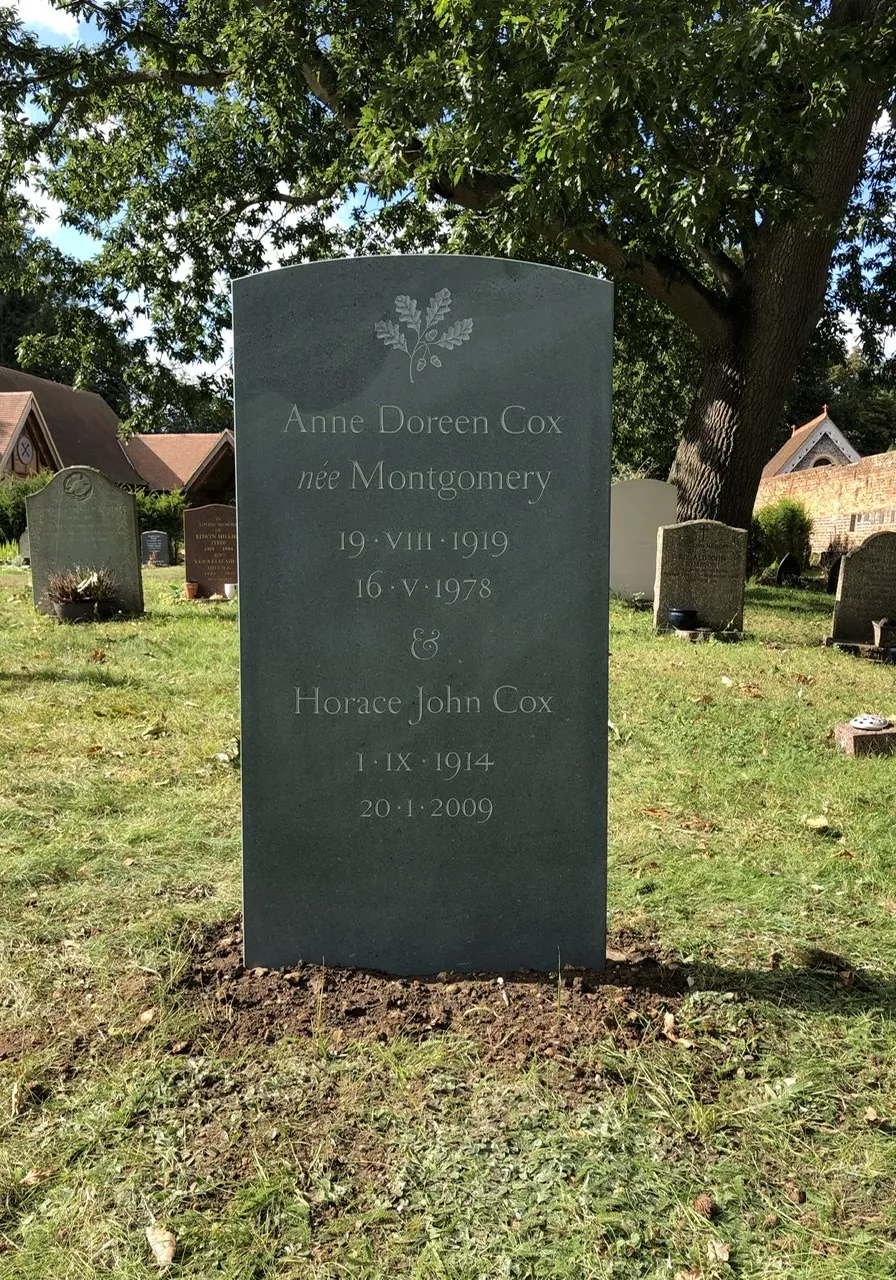
How much do husband and wife headstones cost?
The cost of a headstones for a husband and wife depends largely on the length and complexity of the inscription and whether or not there will be any details like a carving. The cost also depends on the type and size of stone chosen and the distance from Oxfordshire, where we are based. We tend to quote only for the initial name and inscription to be added but if needed we can also quote for the entire headstone and sometimes the surviving spouse wants to pay for the whole headstone in advance.
Our headstones tend to start at £6500 + vat.
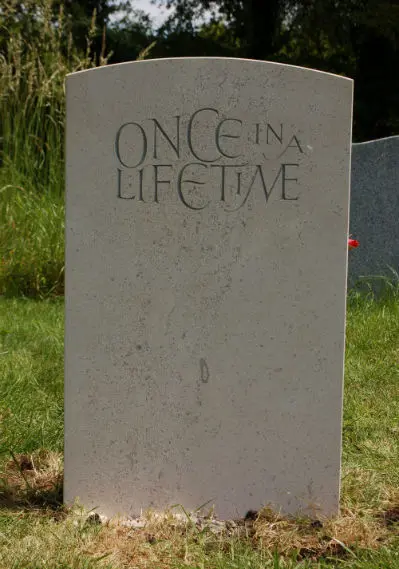
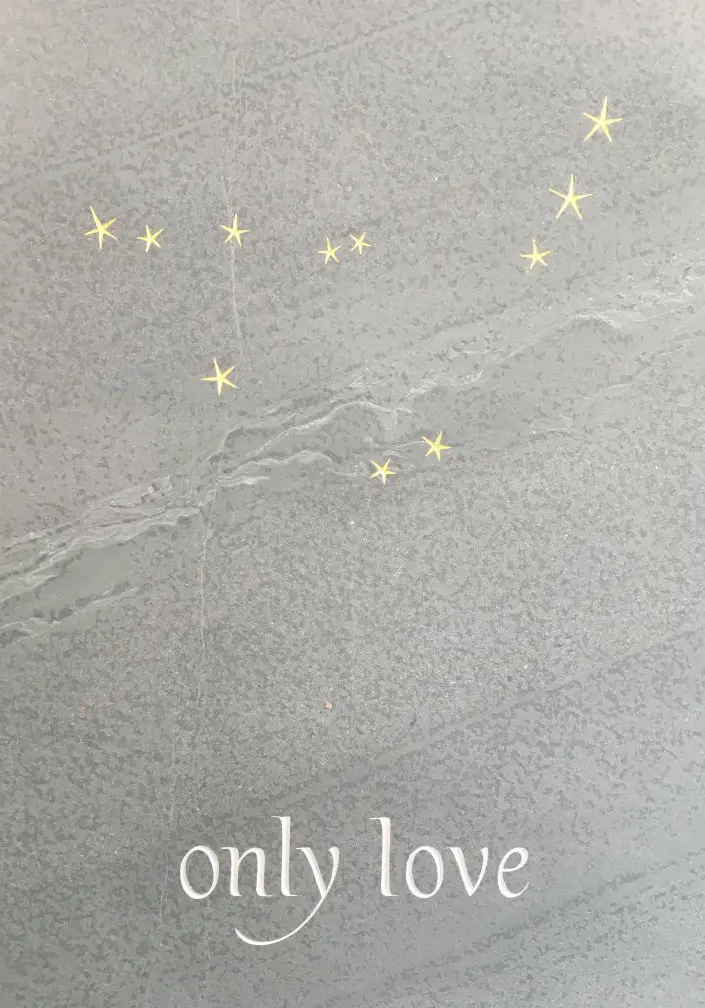
Joint Epitaphs or quotes for a husband and wife headstone
When choosing an epitaph or quote for a joint husband and wife headstone, it is important to consider the design carefully to make sure there is enough space on the headstone. I always say “less is more” and an overcrowded headstone never looks as good as a simple one with plenty of space. I encourage you to consider using the back of the headstone for a longer inscription or epitaph; this has the advantage in that it will mean that there is not a large gap below the first name and the epitaph which might have otherwise been at the bottom of a headstone for a single person.
You can also consider putting the epitaph or inscription along the top edge or around the top of a headstone to free up more space for the husband and wife’s names.
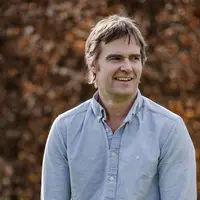
Fergus Wessel
Designer and letter-carver
Fergus created Stoneletters Studio in 2003, after training at the Kindersley Workshop. He is a member of the prestigious Master Carver's Association.


Request our free booklet today
- © 2025 Stoneletters
- Legal notice
- Privacy policy
- Disclaimer
